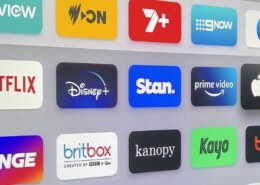Hollywood has always evolved—through silent films, the rise of color, the golden age of television, and the blockbuster boom. But the current transformation is unlike any before. The shift from theatrical screens to digital streams isn’t just changing how we watch—it’s reshaping how stories are told, who gets to tell them, and what kind of narratives dominate the cultural conversation.
Welcome to the new era of storytelling—fast-paced, on-demand, global, and algorithmically driven. And Hollywood is scrambling to keep up.
The Streaming Surge: More Than Just Convenience
The rise of platforms like Netflix, Hulu, Amazon Prime Video, Disney+, and Max has upended traditional distribution. What used to be a linear path—script to studio to cinema—is now a complex web of content pipelines, bingeable formats, and direct-to-consumer strategies.
What’s driving this shift?
-
Audience Behavior: Viewers now expect content when and where they want it. Waiting for a weekly release? That’s optional.
-
Global Reach: A story released on Netflix can trend in Tokyo and Toronto simultaneously. Streaming isn’t just changing Hollywood—it’s internationalizing it.
-
Data-Driven Decisions: Streaming services leverage user data to inform content creation—what people watch, skip, rewatch, and binge is now shaping future productions.
How Storytelling is Evolving
1. The Rise of Serialized, Character-Driven Narratives
Streaming has revived the long-form narrative. Where films are confined to 90–120 minutes, series can unfold over 8–10 hours. This allows for:
-
Deep character arcs
-
Complex world-building
-
Slower, more intimate storytelling
Think Breaking Bad, The Crown, or Stranger Things—stories that thrive in the binge-watch format and wouldn’t have the same impact condensed into a movie.
2. Shorter Attention Spans, Quicker Hooks
While long-form storytelling is on the rise, so is the pressure to grab attention—fast. On platforms flooded with content, the first 5 minutes (or even 30 seconds of a trailer) can make or break viewership.
Writers and directors are now front-loading intrigue, plot twists, and emotional hooks to ensure retention in a distracted digital environment.
3. Genre-Bending is the Norm
Streaming audiences crave innovation. Traditional genre lines are blurring—comedy-dramas, sci-fi thrillers with emotional depth, horror series with social commentary.
This trend encourages creative risk-taking. Shows like Black Mirror, Severance, and The Bear exemplify how streaming has opened the door to experimental narratives that might have been rejected by conventional networks.
Hollywood’s Adaptation Playbook
🔄 Pivoting Studios
Major studios are no longer just content producers—they’re becoming streamers. Disney has Disney+, NBCUniversal has Peacock, and Paramount has Paramount+. This vertical integration lets them control content from creation to distribution.
🤝 Partnering with Tech Giants
Hollywood is increasingly collaborating with tech companies. Apple and Amazon—two tech giants with no cinematic legacy—are now major players in original content. Apple even won Best Picture at the Oscars for CODA.
💸 Betting Big on IP
In a crowded market, brand recognition wins. Studios are doubling down on franchises (Marvel, Star Wars, Harry Potter) and rebooting known properties to reduce risk and guarantee built-in audiences.
Challenges and Criticisms
Despite its success, the streaming era comes with its own set of challenges:
-
Content Overload: With so much content, discoverability becomes a major issue. Great shows often go unseen.
-
Creative Burnout: The demand for constant content leads to tight schedules, high expectations, and sometimes diluted quality.
-
Writer and Actor Strikes: In 2023, Hollywood writers and actors went on strike partly due to the streaming model’s impact on pay and creative control. Residuals for streaming were lower, and the rise of AI introduced new concerns about automation in storytelling.
What’s Next for Storytelling?
The streaming revolution is still unfolding, and the next frontier could be:
-
Interactive Narratives: Think Bandersnatch—stories where viewers shape the outcome.
-
AI Collaboration: Writers experimenting with AI tools to develop scripts faster or explore alternate plotlines.
-
Global Storytelling: Korean dramas, Indian thrillers, and Spanish heist series (Money Heist) have shown that audiences embrace subtitles and global perspectives. Expect more international co-productions.
-
Short-Form Content: With platforms like TikTok and YouTube Shorts dominating younger viewers’ time, storytelling is adapting to even briefer formats—often under 3 minutes.
Conclusion: A New Golden Age—or a Digital Wild West?
Hollywood is no longer confined to the hills of Los Angeles. Today, it’s in our phones, our tablets, our living rooms—available 24/7, personalized, and shaped by algorithms. While traditional storytelling values remain, the rules of the game have changed.
Is this a golden age of creative freedom or a digital Wild West of constant content churn?
Maybe it’s both.
One thing is certain: the screen is no longer the limit. In the age of streaming, story is king—but how it’s delivered will keep evolving. And Hollywood, ever the shape-shifter, will evolve with it.

